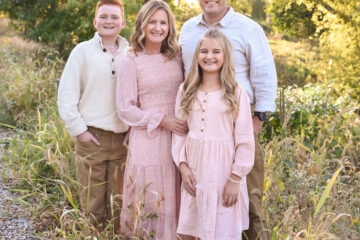Story by Emily Kestel, graphics by Lauren Burt
Last year, Fearless published a two-part examination of the representation of women involved in politics in the state. One story looked at the gender balance law for civic boards and commissions, and the other looked at those serving at the state and federal legislative levels.
It’s always good practice to periodically revisit the data to take stock of where we’re at, so without further ado, here’s a look at past and present Iowa women who have held political office.
Iowa ranks No. 32 in the nation for the proportion of women in state legislatures.
According to data analyzed by the Center for American Women and Politics, Iowa comes in 32nd place in terms of the proportion of women serving in its state legislature. Last year, Iowa sat right in the middle at No. 25.
Coming in first place is Nevada, where women hold more than half of the seats in its state legislature. West Virginia ranks last, where women hold 13% of seats in its state legislature.
184 women have served in the Iowa Legislature throughout its 184-year history.
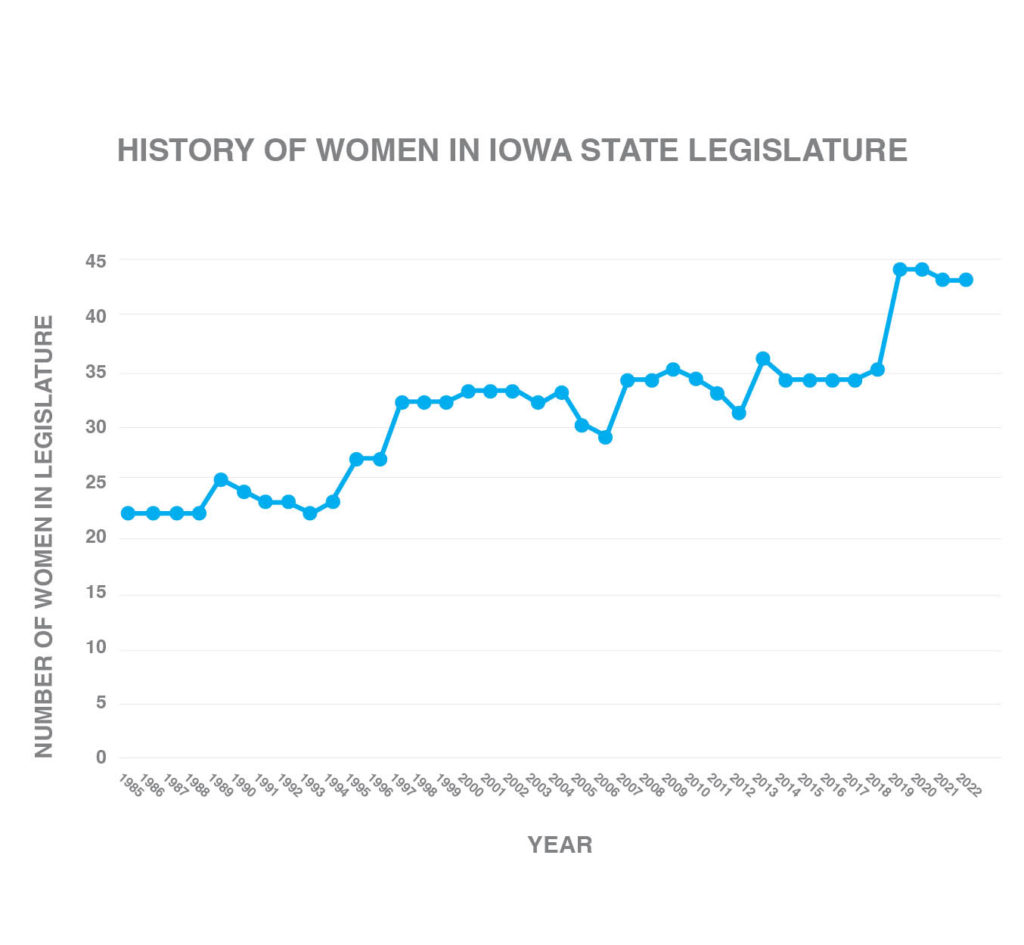
To break it down, 135 women have served or currently serve in the Iowa House, 31 have served or currently serve in the Senate and 18 have served in both chambers. Breaking it down by party, 83 — or 45% — served as Republicans and 101 — or 55% — have served as Democrats.
Here’s the real kicker, though — 5,357 people have served in the Iowa Legislature since 1838 according to the latest data available on the Legislature’s website. That means women have held a paltry 3% of seats in the Legislature’s history.
The first year that more than two women served in each chamber of the Legislature was 1969.
Only seven women of color have served in the Iowa Legislature.
The statehouse has seen just seven self-identified women of color sit in its chambers as lawmakers – Deborah Berry, Swati Dandekar, June Franklin, Ruth Ann Gaines, Willie Glanton, Helen Miller and Phyllis Thede.
All but Dandekar identified as Black/African-American. Dandekar is Indian.
The only women of color currently serving in the 89th General Assembly are Gaines and Thede.
Nationally, of the 2,308 current women state legislators, nearly 74% identify as white.
Nearly 30% of Iowa counties have not had a woman from there represented in the Legislature.
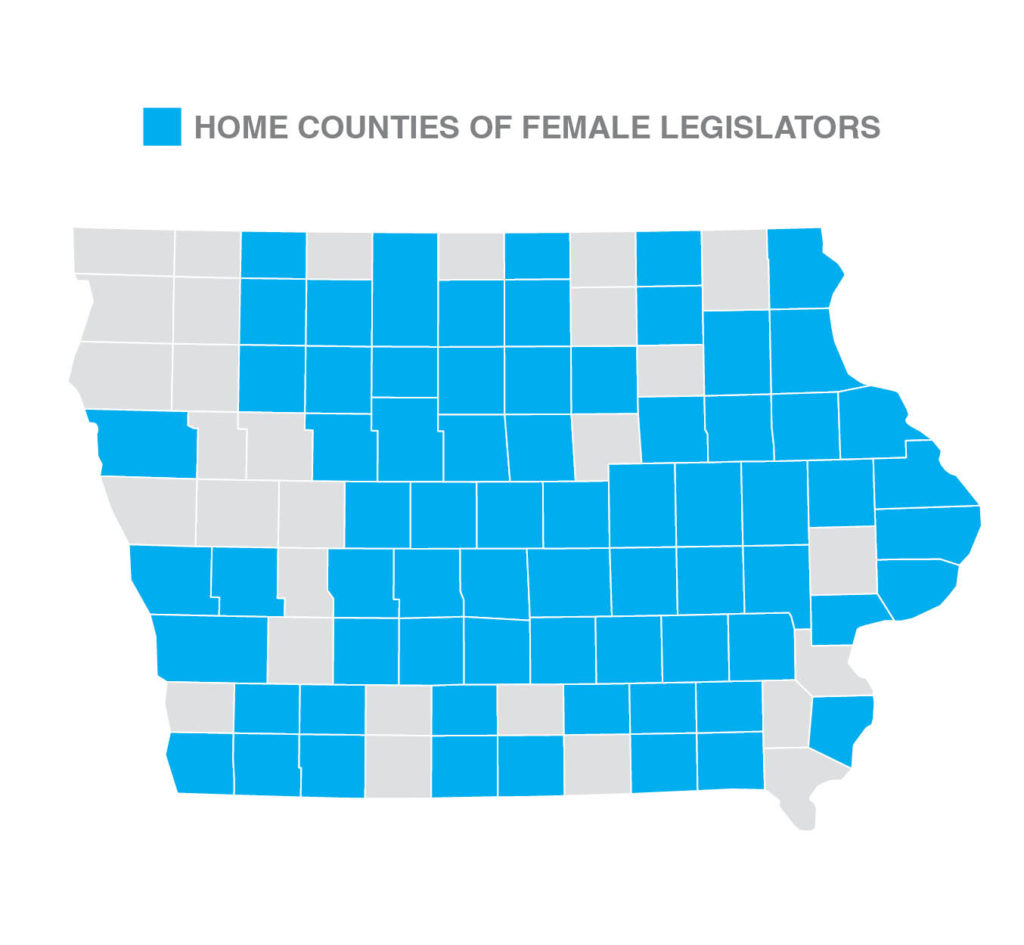
When looking at historical data of legislators’ home counties, 29 of Iowa’s 99 counties have never had a woman from there serve in the statehouse. Those counties are: Appanoose, Audubon, Bremer, Carroll, Cass, Cedar, Cherokee, Crawford, Emmet, Floyd, Grundy, Henry, Ida, Lee, Louisa, Lucas, Lyon, Mills, Mitchell, Monona, O’Brien, Osceola, Plymouth, Ringgold, Sac, Sioux, Union, Winnebago and Winneshiek.
Note: Not all legislative districts are neatly outlined according to county boundaries, which means you can’t assume that the district that county encompasses has never had female representation. For example, Rep. Jane Bloomingdale represents house district 51, which encompasses four different counties – Worth, Mitchell, Howard and Winneshiek. Yet Winneshiek is one of the counties that has never been home to a female legislator because Bloomingdale’s home county is Worth.
The first woman to serve in the Iowa Legislature was elected in 1928.

Up until the 43rd General Assembly, no woman had ever served in the Iowa Legislature.
Carolyn Pendray was elected as a Democrat to serve Jackson County in the Iowa House of Representatives in 1928 — two years after women were first allowed to serve in the Iowa Legislature and eight years after the passage of the 19th Amendment, which gave women the right to vote (though many women of color would continue to be denied the right to vote until the passage of the Voting Rights Act of 1965).
Currently, 28% of Iowa legislators are women.
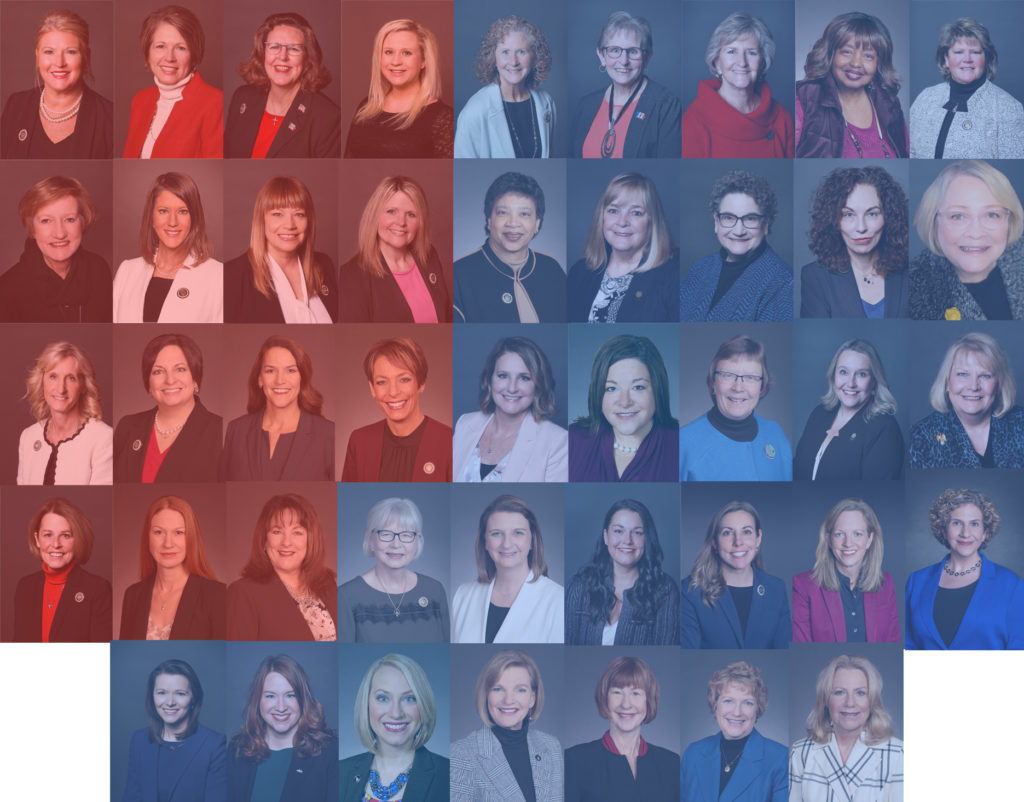
Forty-three women are currently serving in the 89th General Assembly. Of those, 28 are Democrats and 15 are Republican, or 65% and 35%, respectively.
Nationally, women hold 31% of seats in state legislatures. Breaking it down by party, 65% are Democrats and 33% are Republicans. (The other 2% identify as nonpartisan, independent or other).
Thirteen women have held seven statewide elective executive positions in Iowa.
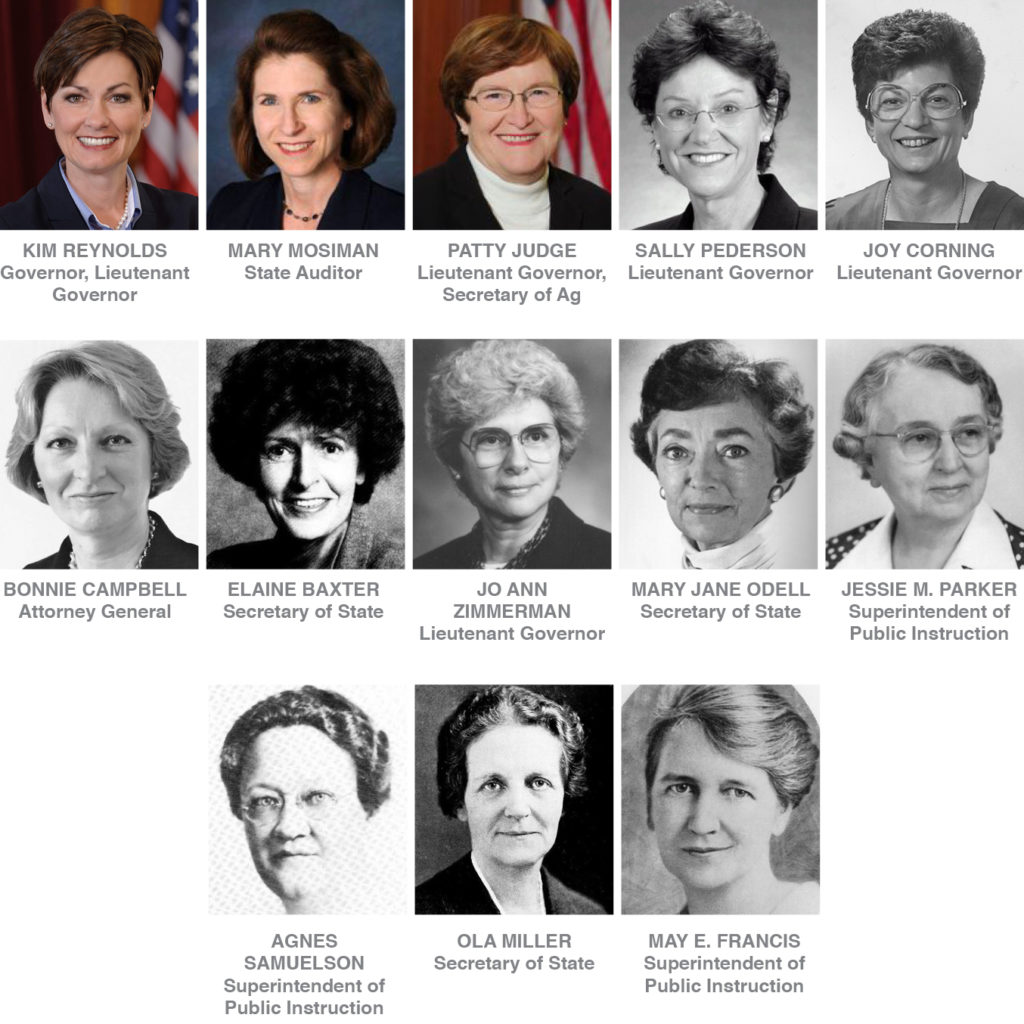
Thirteen different women have held seven statewide elective executive positions, including governor, lieutenant governor, state auditor, secretary of agriculture, secretary of state, attorney general and secretary of public instruction, now known as director of the department of education.
Five women have or currently represent Iowa in federal office.

At the national level, five women have represented or currently represent Iowa in the U.S. Congress.
Elected in 2014, Sen. Joni Ernst was the first woman to represent Iowa in the U.S. Senate. In the 2018 election, Reps. Cindy Axne and Abby Finkenauer became the first women to represent the state in the U.S. House.
Only one state has never sent a woman to Congress: Vermont.
When looking at the proportion of women in U.S. Congress by state, Iowa is tied with Nevada, Washington and Wyoming – each state has 66.7% of its seats represented by women. The only state that has a larger proportion of women is New Hampshire, where 3 of its 4 allotted seats are held by women.
Iowa is one of eight states that have a gender balance law for civic boards and commissions.
However, Iowa is the only state where the requirement also penetrates down to the city and county levels.
The law reads that all appointive boards, commissions, committees and councils of the state should have an equal number of women and men, but in reality, there are no consequences if they aren’t balanced.
Women hold just over a third of county board and commission seats, and more than 40% of city board and commission seats.
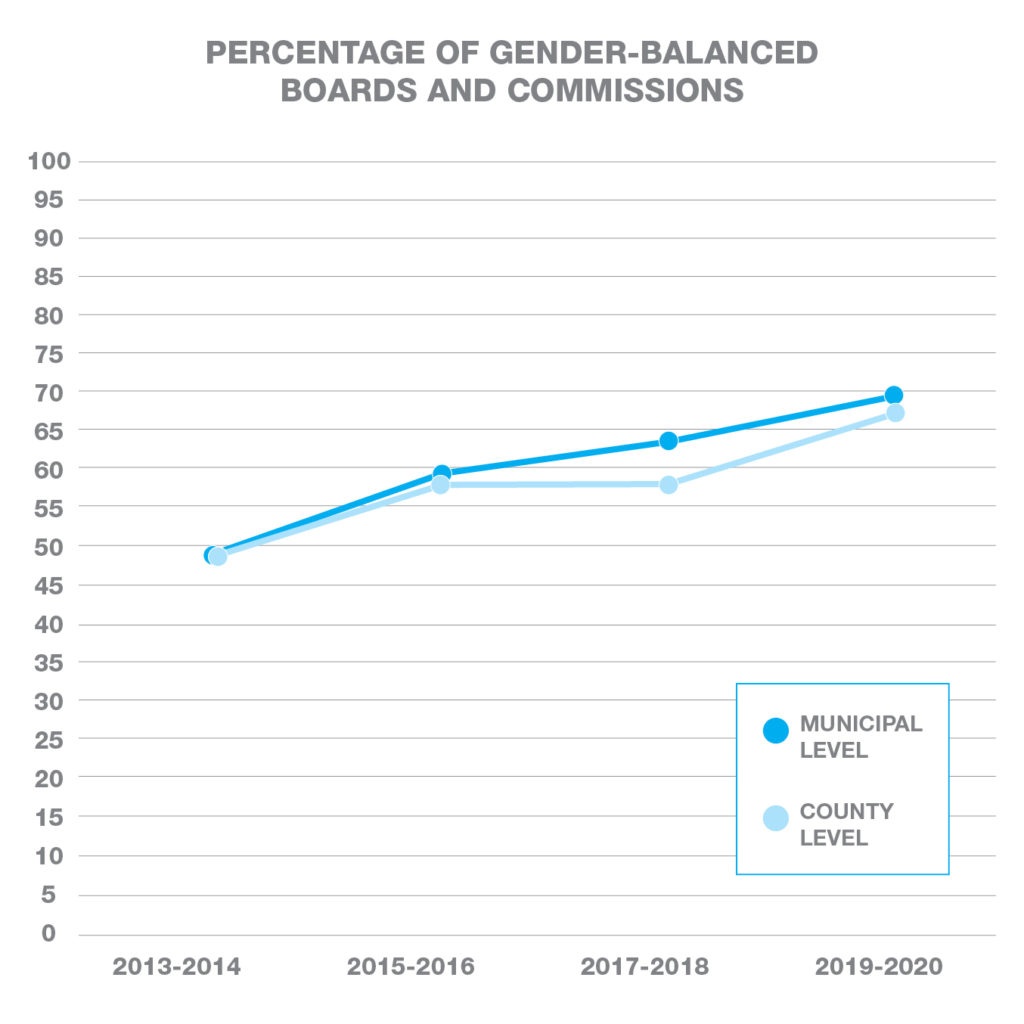
In the Catt Center’s most recent data collection that ended in spring 2020, it found that women hold a third of county board and commission seats while 67% of county boards and commissions are gender-balanced. Of the 83 counties that chose to participate, 14 have achieved gender balance.
Of the 186 cities that chose to participate in the Catt Center’s data collection, 33 have achieved gender balance on all nine boards and commissions examined. Sixty-nine percent of the city boards and commissions are gender-balanced while women hold 41% of seats.
Editor’s note: This story has been updated to correct an error. There have been 13 women elected to seven statewide elective positions.
This article appeared in the weekly Fearless e-newsletter. Sign up to receive it for free at https://fearlessbr.com/e-newsletter/.
